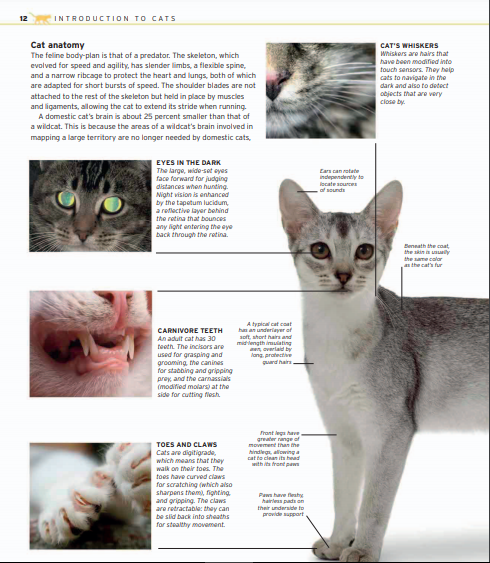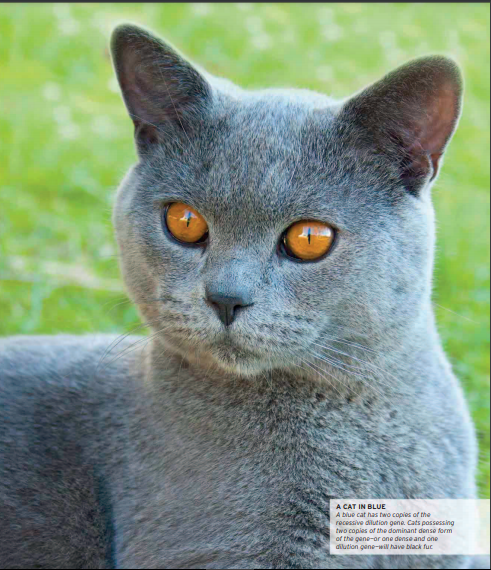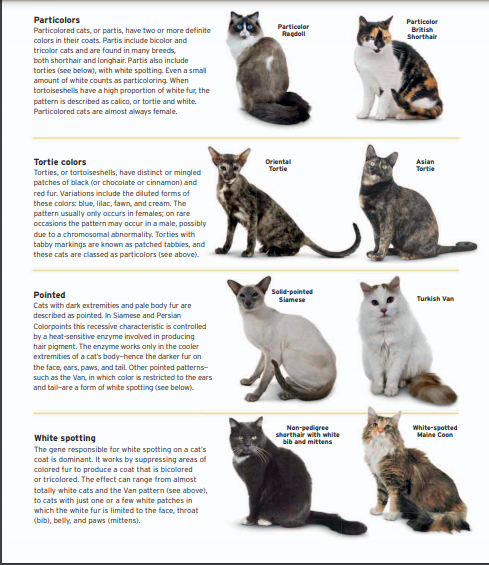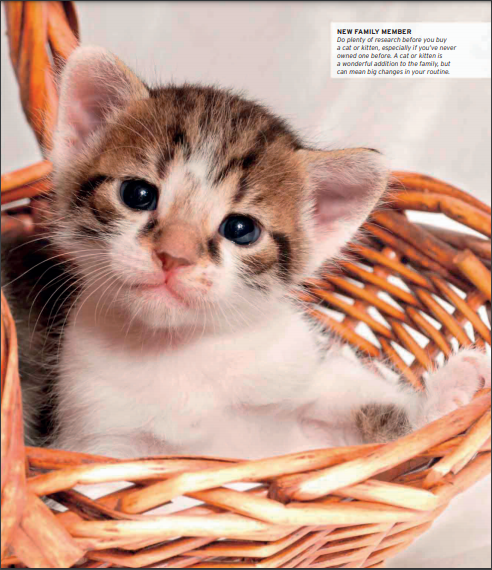Complete Cat Breed Book
On Sale
$15.99
$15.99
"Cats Encyclopedia" combines cat breeds, behaviors and training skills in a simple book, which is an indispensable reference for the selection and care of cats. From handling and grooming to nutrition, exercise and health, and practical advice on the maintenance of cats, cat owners now and in the future will find the best cat breeds that suit their lifestyles. Includes charts and a photo catalog of more than fifty cat breeds. Each profile outlines the breed’s history, appearance and temperament, as well as coat color changes and breed-specific facts. This is perfect for anyone who wants to raise and breed cats The guide meets the cat.
The family history of domestic cats can be traced back a long time ago, when the earliest human primates have entered the earth. All cats (from tigers, jaguars and other large cats to smaller cats and small food cats) belong to a family of mammals called Felidae, which contains 41 living species. The first cat-like carnivores appeared about 35 million years ago. Fossil evidence indicates that modern cats appeared in Asia about 11 million years ago. However, the big cats we know today, such as lions, did not evolve until much later, about four to two million years ago, when drier, warmer climates led to open habitats and a group of soft skins. Of grazing animals. The athletic ability of big cats is very suitable for catching such prey. Less agile cats (such as saber teeth) gradually disappear. Recently evolved cats include the (United States and Europe), Lynx (United States), Ocelot (Southeast Asia) and Wildcat (Africa, Europe and Asia).
Domestic cats are the offspring of African wild cats and are generally considered a subspecies of wild cats. Domestication In the Near East about 10,000 years ago, humans first began to grow cereal crops and began to store cereals. They found that rats would enter their shop and eat grains. However, the rodent itself was eaten by small predators such as African wildcats. Soon, the relationship between cats and people developed: cats had a readily available food supply among rodents attracted by people, and people received a very appreciated form of pest control, living with them in their towns and cities. In the countryside. The wild species of cats are inherently wary of humans, but over time, natural selection tends to make cats least fearful and adaptable from being lonely hunters to being close to humans and other cats.
Product details
Format fil : PDF
Language : English
Hardcover : 249 pages
Item Weight : 2.13 pounds
Dimensions : 7.9 x 0.92 x 9.5 inches
Notoriety : Best Sellers
The family history of domestic cats can be traced back a long time ago, when the earliest human primates have entered the earth. All cats (from tigers, jaguars and other large cats to smaller cats and small food cats) belong to a family of mammals called Felidae, which contains 41 living species. The first cat-like carnivores appeared about 35 million years ago. Fossil evidence indicates that modern cats appeared in Asia about 11 million years ago. However, the big cats we know today, such as lions, did not evolve until much later, about four to two million years ago, when drier, warmer climates led to open habitats and a group of soft skins. Of grazing animals. The athletic ability of big cats is very suitable for catching such prey. Less agile cats (such as saber teeth) gradually disappear. Recently evolved cats include the (United States and Europe), Lynx (United States), Ocelot (Southeast Asia) and Wildcat (Africa, Europe and Asia).
Domestic cats are the offspring of African wild cats and are generally considered a subspecies of wild cats. Domestication In the Near East about 10,000 years ago, humans first began to grow cereal crops and began to store cereals. They found that rats would enter their shop and eat grains. However, the rodent itself was eaten by small predators such as African wildcats. Soon, the relationship between cats and people developed: cats had a readily available food supply among rodents attracted by people, and people received a very appreciated form of pest control, living with them in their towns and cities. In the countryside. The wild species of cats are inherently wary of humans, but over time, natural selection tends to make cats least fearful and adaptable from being lonely hunters to being close to humans and other cats.
Product details
Format fil : PDF
Language : English
Hardcover : 249 pages
Item Weight : 2.13 pounds
Dimensions : 7.9 x 0.92 x 9.5 inches
Notoriety : Best Sellers











